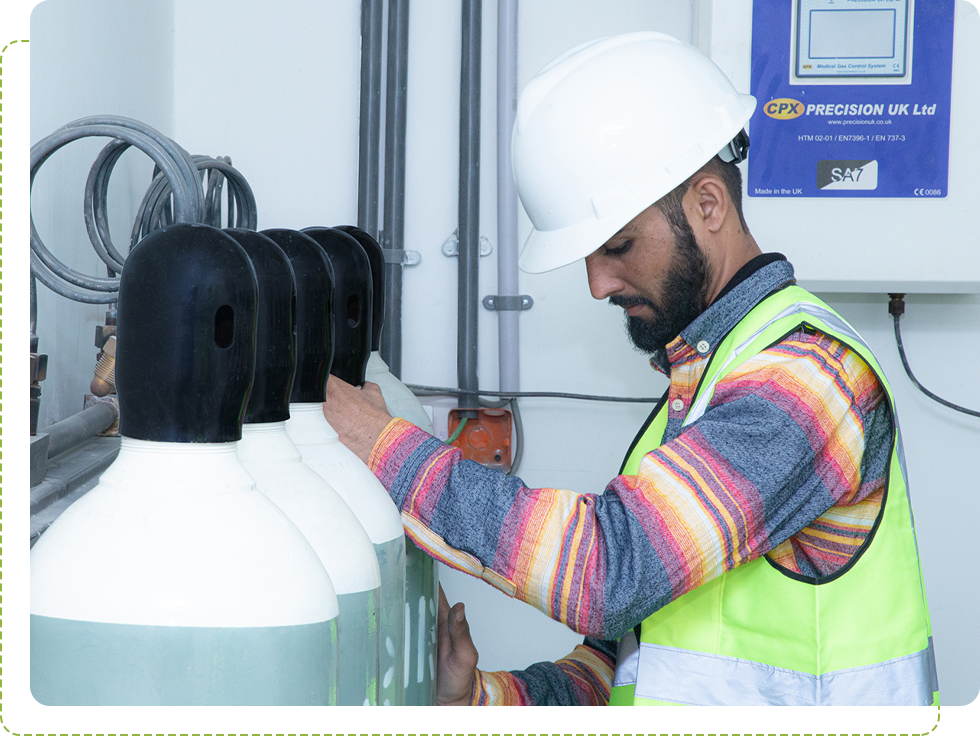Entonox is the trade name for the gaseous mixture of 50% oxygen and 50% nitrous oxide by volume, also known as ‘gas and air,’ which provides an effective and quick-acting pain relief
It is commonly used in the casualty and labor ward settings to provide analgesia. When used, a two-stage pressure demand regulator is attached to the mixture gas cylinder. Gas flow can occur as the patient inspires through the mask or mouthpiece. Gas flow ceases at the end of an inspiratory effort.
Entonox is compressed into cylinders to a pressure of 13 700 kPa. Entonox cylinders should be stored at 10°C for 24 hours before use. If the temperature of the cylinder is decreased to below −5.5°C, liquefaction and separation of the two components occur (Poynting effect). This results in:
- a liquid mixture containing mostly nitrous oxide with about 20% oxygen dissolved in it
- above the liquid, a gas mixture of high oxygen concentration.
A gas with a high oxygen concentration is supplied first when used at a constant flow rate. It is followed by a gas of decreasing oxygen concentration as the liquid evaporates. It may lead to the supply of hypoxic mixtures with less than 20% oxygen, as the cylinder is nearly empty.
Rewarming and mixing the cylinder and its contents reverses the separation and liquefaction.




